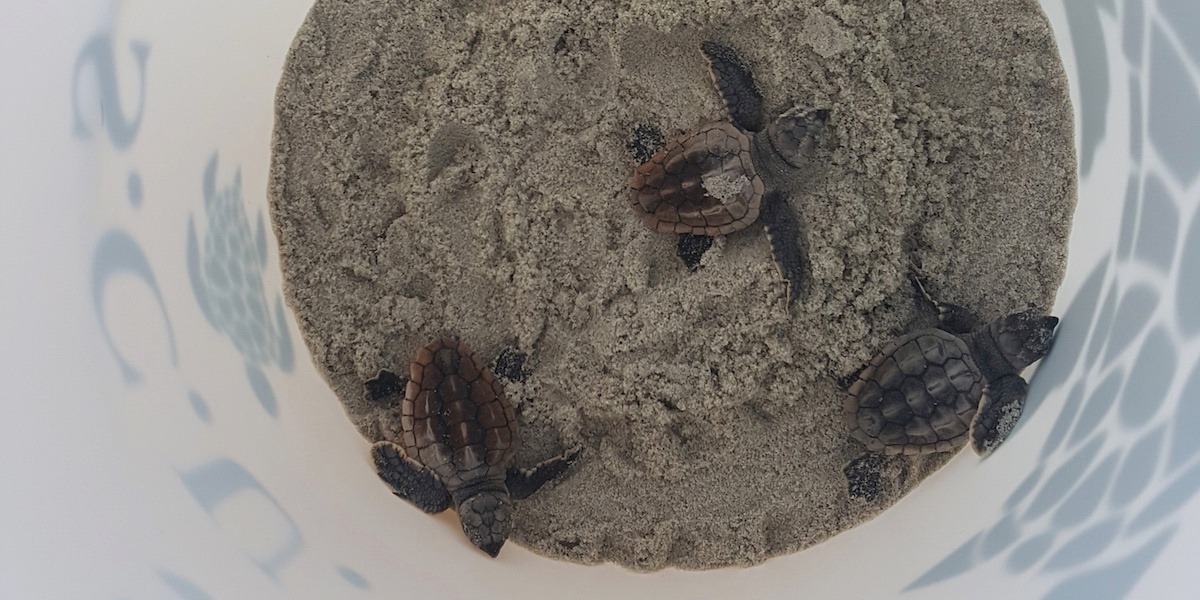

South Carolina United Turtle Enthusiasts (S.C.U.T.E) unearthed three baby loggerheads after a nest inventory at Pawleys Island beach. Lorraine Chow
A new study published in Science Advances has found that most global sea turtles populations are recovering after historical declines.
The results from the analysis suggest that conservation programs actually work, and why we must defend the Endangered Species Act (ESA) that protects vulnerable plants and animals, and is currently under attack by political and business interests.
It’s not exactly clear why sea turtle populations are making a comeback, but as the New York Times reports, conservation efforts since the 1950s have safeguarded beaches, regulated fishing and established marine protected areas, leading to a boost in turtle numbers.
“Our findings highlight the importance of continued conservation and monitoring efforts that underpin this global conservation success story,” Antonios Mazaris, an ecologist at the Aristotle University of Thessaloniki in Greece, and his team of international researchers wrote in the study.
All sea turtles found in U.S. waters are listed under the ESA. But the Center for Biological Diversity reported that since January, congressional Republicans have launched 50 legislative attacks against the environmental law or on a particular endangered species.
David Godfrey, a member of the International Union for Conservation of Nature’s Marine Turtle Specialist Group and executive director of the Sea Turtle Conservancy, told Newsweek that lawmakers could decrease funding needed to protect vulnerable species or even delist a species from the ESA.
As Godfrey explained to Newsweek:
“You have an administration at the federal level now and members of Congress who would like to diminish the strength of the Endangered Species Act,” he said. “There have been complaints for years that it’s ineffective, it doesn’t work, we’re wasting money.”
Spreading to the world that these policies are working might push back against those perceptions, but Godfrey hopes the good news won’t convince people that all the needed work has been done. “It’s something we should acknowledge and be trumpeting,” he said. “But it doesn’t take long for the trend in their population to start going the wrong way.”
The researchers in the current paper note that sea turtles populations are not rising across the board, such as the declining number of leatherbacks in the Eastern and Western Pacific. Their findings reflect the International Union for Conservation of Nature’s Red List, which lists six of the seven types of sea turtles species as vulnerable, endangered or critically endangered.

 233k
233k  41k
41k  Subscribe
Subscribe 